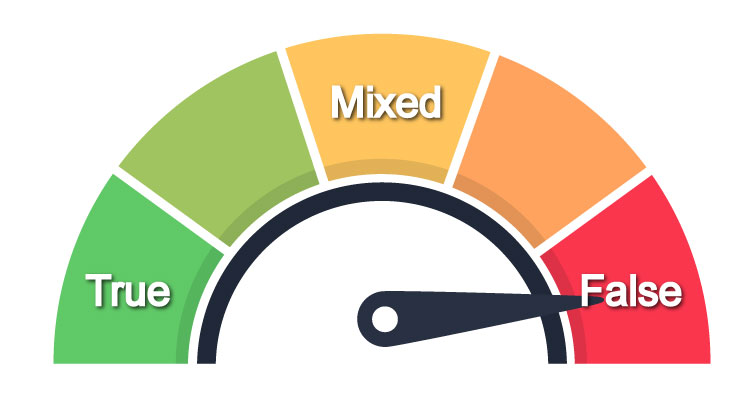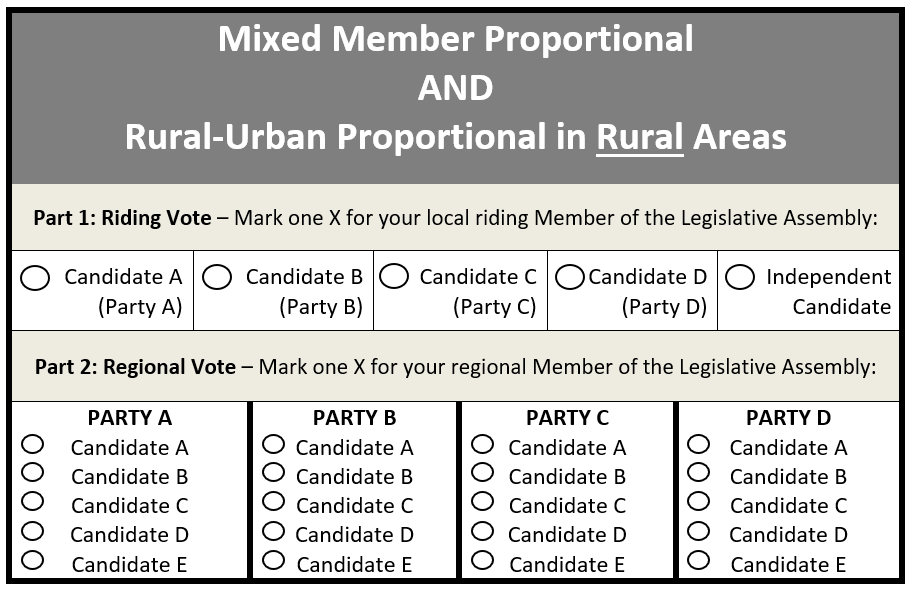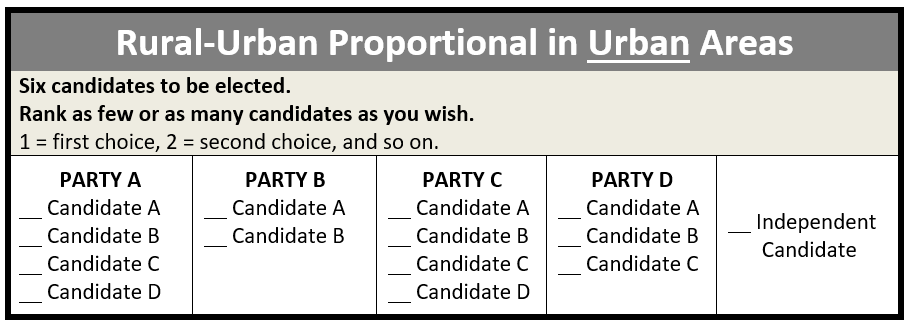Claim: “You will have your representatives chosen off political party lists. Most often, these people are well-connected political operatives who, more often than not, will be from the Lower Mainland or Victoria.” “When you vote for a political party you are giving over your authority to that political party to appoint people to the legislature.”
Stated by: BC Liberal website, NO side spokesperson Suzanne Anton

Fact Check
These claims are mostly false. There is no system on the ballot with “MLAs appointed by party bosses”. Most of the systems give voters more choice than they have today. In all proportional systems on the ballot, candidates will be from your local riding or region. Any exceptions that occur in real life also apply to our current system, first-past-the-post.
There are two claims to evaluate:
1) “You will have your representatives chosen off party lists” who are “appointed” by the parties.
2) “More often that not, they will come from the Lower Mainland and Victoria.”
As each of the three proportional models on the ballot in BC are different, we will deal with each in turn below, but the following applies to all systems:
Party Lists
- Currently with first-past-the-post, there is just one candidate on the ballot from each party. Usually, that person got on the ballot for the party by winning a local nomination meeting. So, they were voted to be the candidate by party members. They were not “appointed.”
a - Essentially, with first-past-the-post, voters are looking at a “party list” of one person nominated by local party members. With proportional systems, voters will be looking at a “list” of more than one person nominated by local party members.
a a - While democratic local nomination meetings are the norm, we all know of the exceptions under first-past-the-post where a party leader overrides the local nomination process and parachutes in their star candidate, essentially “appointing” them to run, or some other unfair process happens locally within the party to choose the candidate. These cases are unrelated to the electoral system and have to do with the internal workings of parties.
a - Some proponents have said that with proportional representation, when there is more than one candidate on a ballot for one party, it draws public attention to the local nomination processes and therefore puts pressure on the parties to ensure their candidate nominations are more democratic. However, this claim is based on anecdotal reports from voters in other countries. There is no research looking at whether candidate nominations will become any more or less democratic within parties if BC adopts a different voting system.
a
The Three Systems: How Party Lists Work
Dual Member Proportional
- Dual Member Proportional means most constituencies will be paired and each new constituency will elect two MLAs.
a
- Dual Member Proportional presents voters with a pair of two candidates and voters put an X beside a pair, instead of one. This could be called a list of two, although Dual Member PR is not usually considered a “party list” system. SEE BALLOT BELOW.
aa - Both candidates on the ballot are nominated by local party members, just like today. a
a
- The first seat is won by the first listed local candidate from the party pair with the most votes. a
a
- The second seat is allocated taking into account both local and provincial results. Usually this will go to the primary candidate of the party that got the second most votes locally a
a
- Just like now, all candidates need to run in the local election. The two locally elected MLAs are no more likely to come from the Lower Mainland or Victoria than they are under our current system.

- You will vote for a local MLA just like you do under first-past-the-post.
aa - You will vote for a regional MLA on a second part of your ballot. SEE BALLOT BELOW.
a - Candidates will be chosen in local or regional party nomination meetings, like today.
a - All the candidates listed on the party’s regional list will be from your region. The list of regional candidates will most likely include the candidates who are also running for the local seats in your region (this is called “dual candidacy”).
aa - You are not likely to have MLAs from the Lower Mainland or Victoria unless you live in a region that includes the Lower Mainland and Victoria. Of course, there will be exceptions under any system. For example, under our current system, Christy Clark was elected in Kelowna even though she is from Vancouver. This kind of situation could happen with pro rep as well, but there is no evidence it is more likely to occur.a
aaa - Regarding the second part of your MMP ballot to elect regional MLAs, there are design options to be decided by the all-party committee in consultation with citizens and experts following the referendum. You may be able to:
a
a) Just vote for a party. In this case, you will see the regional candidates listed and just like current elections, you will know ahead of time who is running for the party. If your preferred party gets regional seats, the seats will be filled according to the order on the list, as determined by party members in local nomination meetings. This is called a CLOSED LIST.
a
b) Have the choice of just voting for a party (therefore saying you are fine with the order of the candidates on their list) or choosing to vote for one individual regional candidate. The Attorney General’s report calls this “Open List with party option.”
a
c) Choose one regional candidate (no option to vote just for a party, you must choose an individual). This is called an OPEN LIST.
a
SEE BALLOT BELOW FOR MIXED MEMBER PR WITH AN OPEN LIST.
a
IMPORTANT NOTE: While the choice of closed, flexible or open list has been left to an all-party committee in consultation with experts and citizens after the referendum, the BC NDP has clearly stated its preference for an open list where you vote for an individual regional candidate. The BC Liberal Party is clearly opposed to closed lists. All the electoral reform expert/advocacy groups have also submitted recommendations to the Attorney General during the consultation process for an open list. No parties or citizens groups are favour of a closed list therefore there’s no realistic chance of that feature being adopted.

a
Rural-Urban Proportional means that voters in urban and semi-urban areas will use Single Transferable Vote and voters in rural areas will use Mixed Member PR as described above.
a
This section will deal only with Rural-Urban Proportional in urban areas.
- Local constituencies are combined to form local districts electing several local MLAs. a
- There are no party lists. Single Transferable Vote is a candidate-based proportional system, not a party list system, although it will clearly be indicated on the ballot which party each candidate is affiliated with. SEE BALLOT BELOW. a
a
- Each party will nominate from one to several candidates on the ballot, depending on how many local seats there are in your district, and how many seats each party can hope to win.
a - Candidates will be chosen in local party nomination meetings, just like today.
a - You will not have MLAs from the lower Mainland or Victoria unless you live in a local district that includes the Lower Mainland and Victoria.
References

